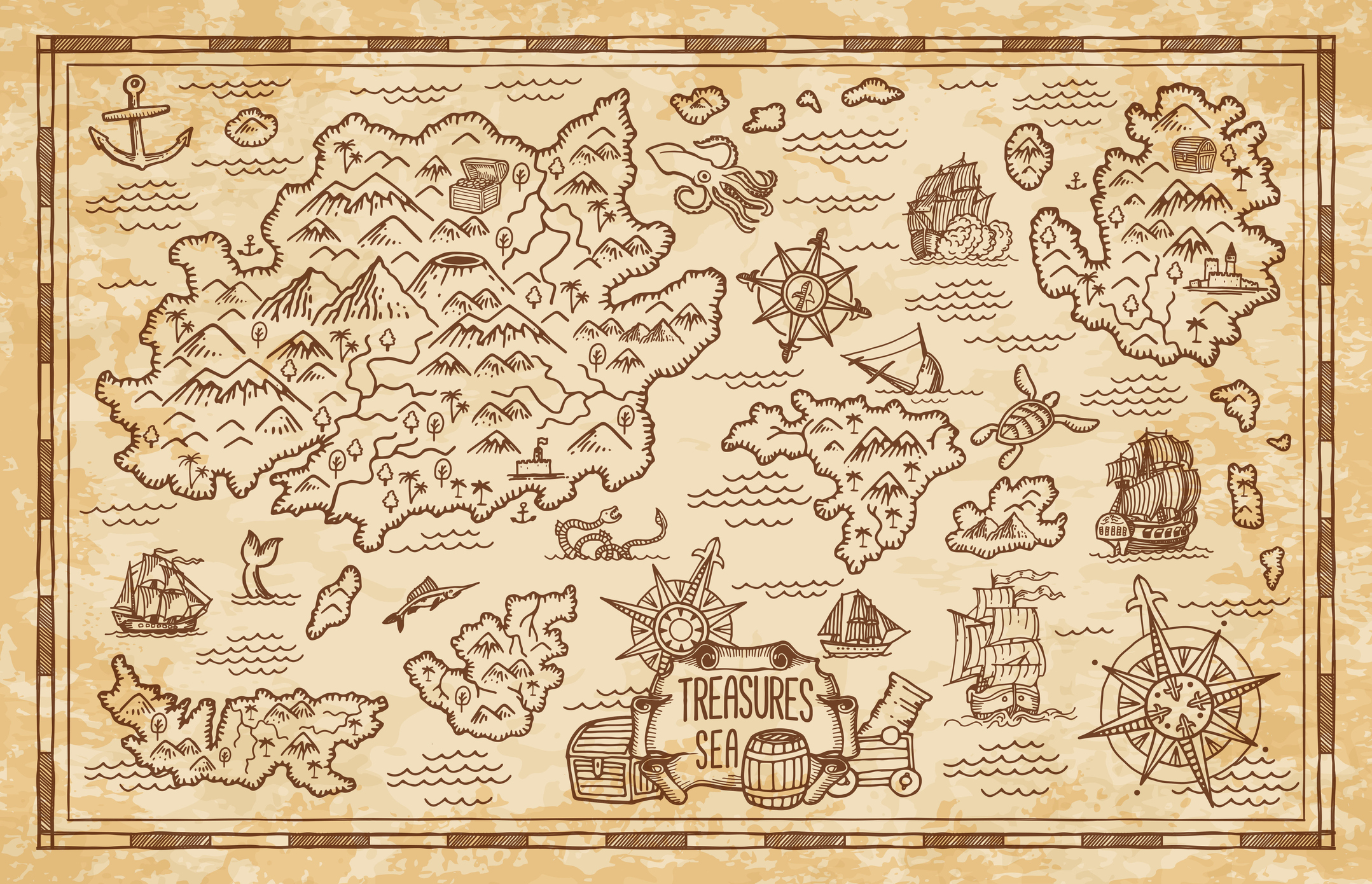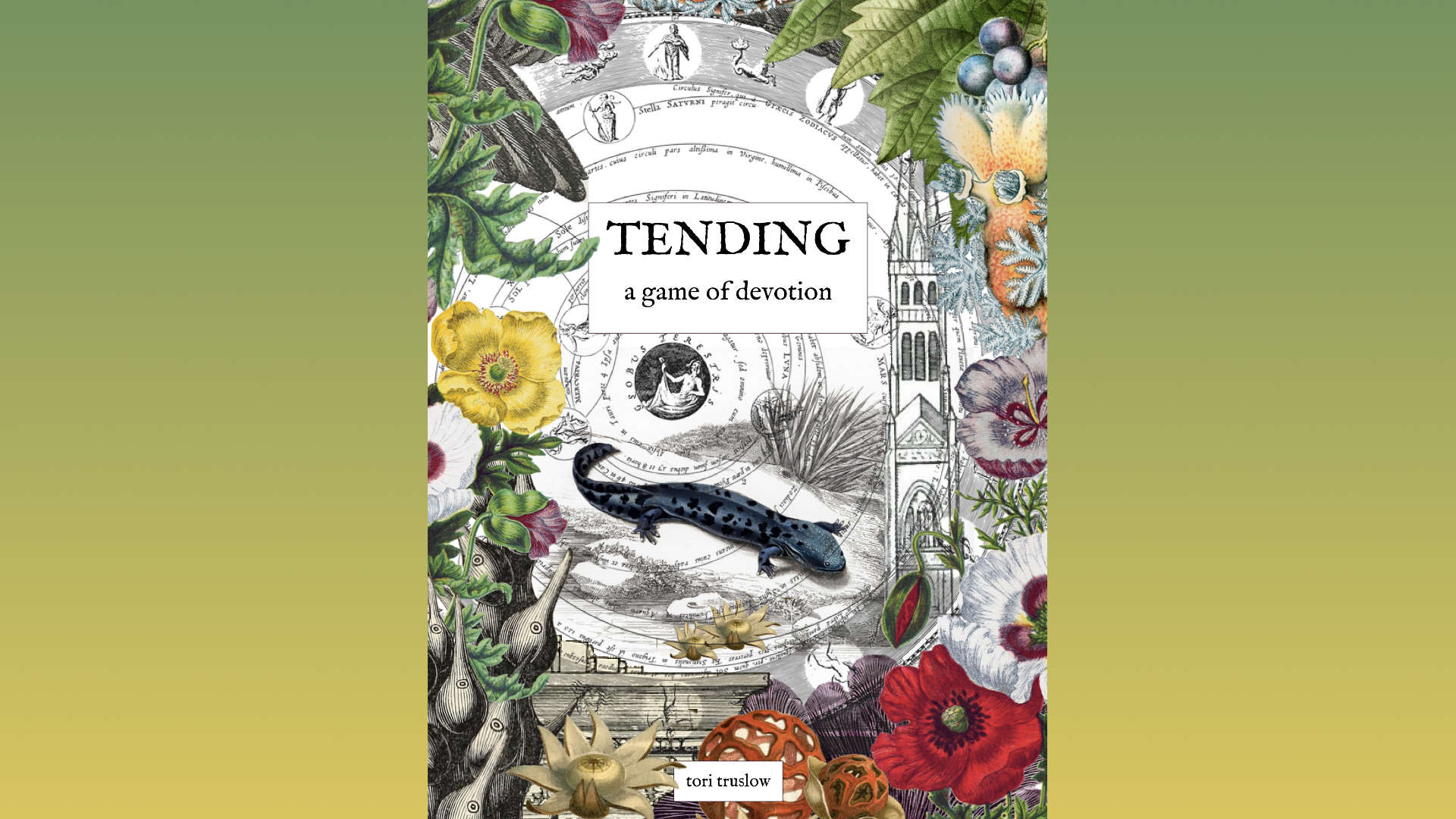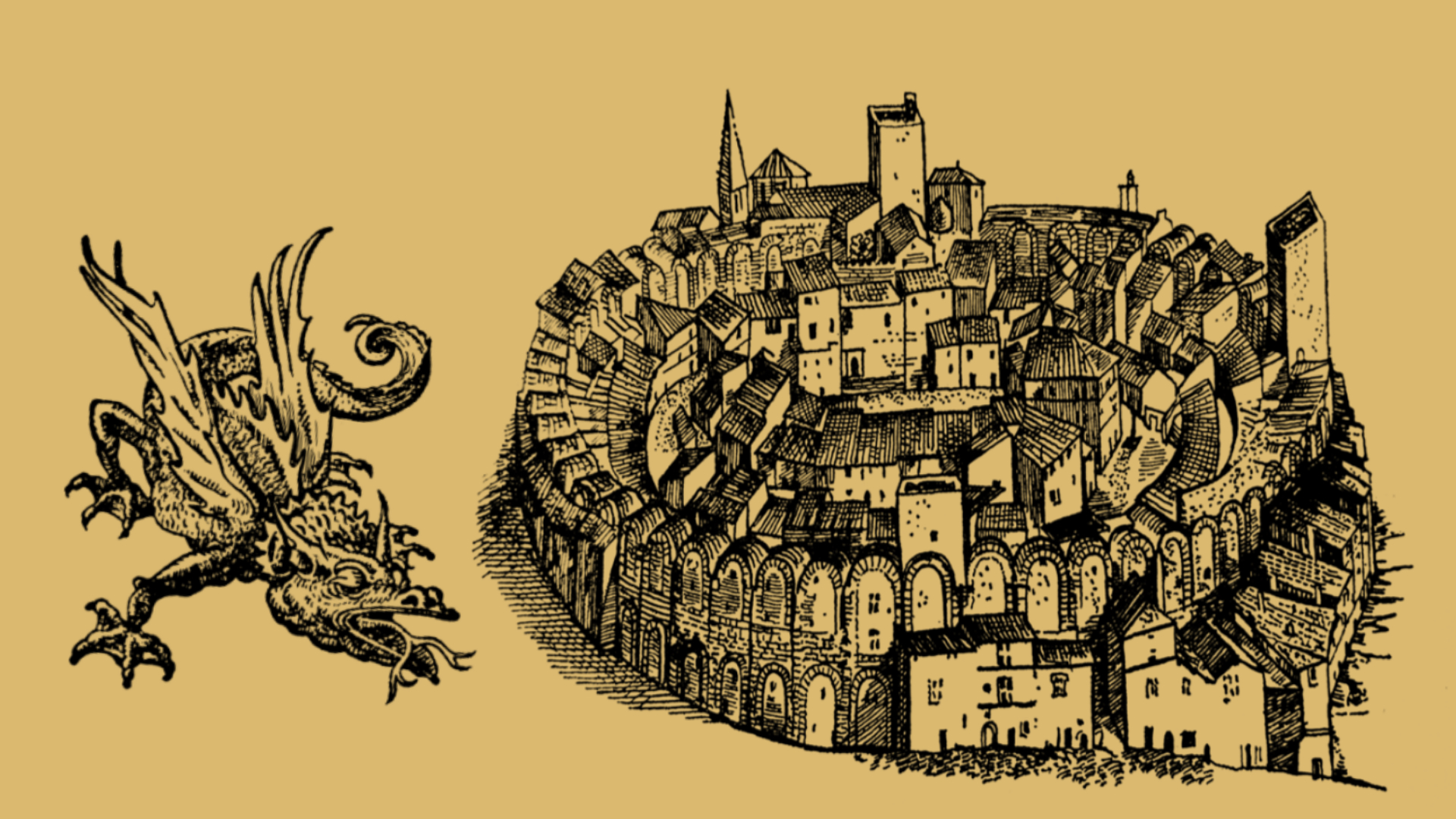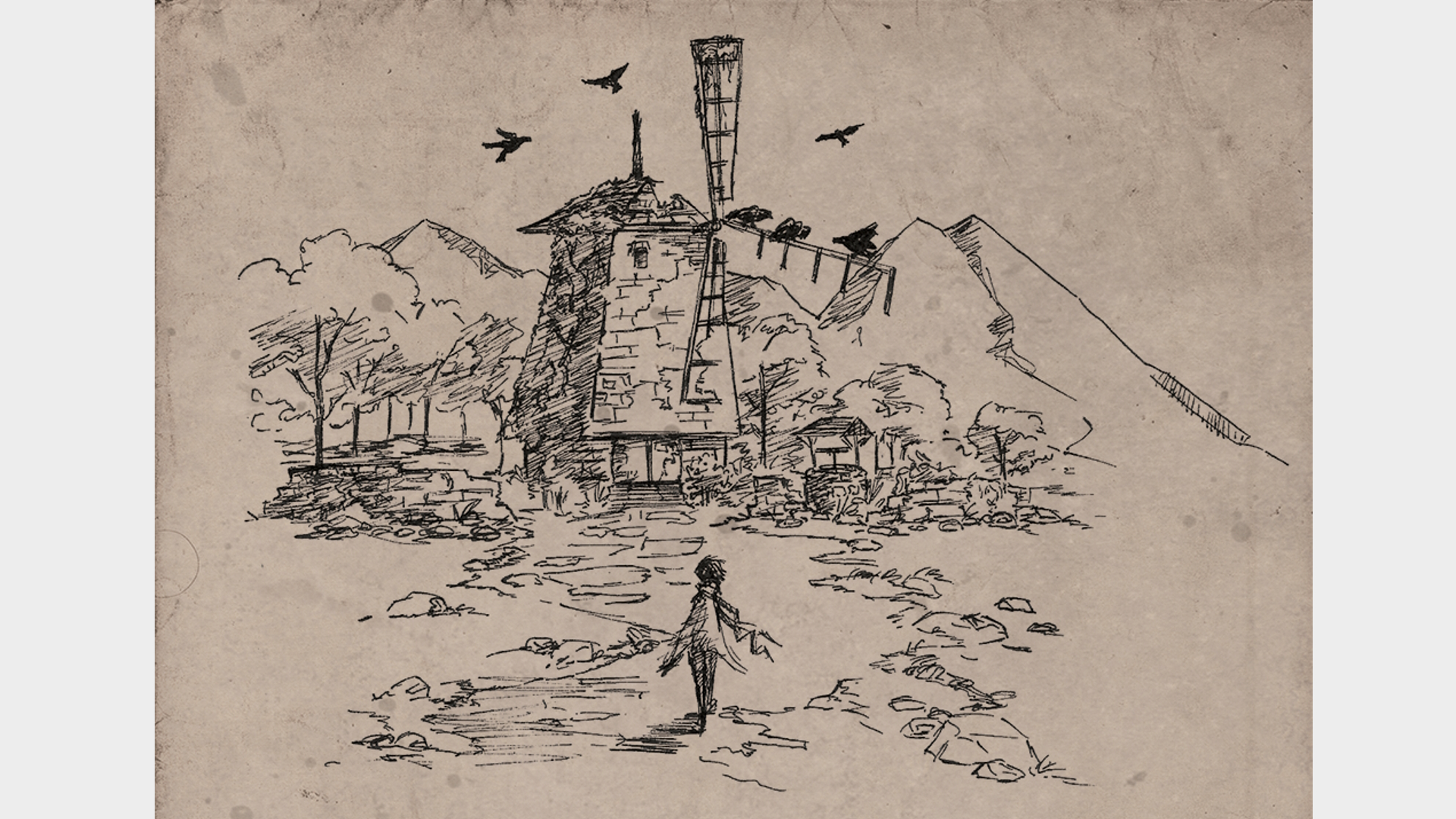
Building your own tabletop RPG worlds is hard. Thankfully, worldbuilding doesn't have to be a chore with these tabletop games, which have had me designing homebrew style D&D settings, maps, and lore like there's no tomorrow, and even getting great ideas for my novel. Of course, I'm sharing my new mass of worldbuilding games here so others can join me in the party pantheon, hopefully this list will take the stresses out of D&D worldbuilding for you, and make it fun again.
In case you're unfamiliar with the concept, worldbuilding is the process by which any setting you've ever seen in a game, movie, or narrative of any kind is designed. Some people do it just for fun, in fact, without so much as a story in mind. Worldbuilding comes in at every scale, and doesn't have to be a solo endeavour. Many of the worldbuilding games below are collaborative, in fact, so you can get your friends and players involved in the process.
Speaking to Caro Asercion—tabletop game designer and worldbuilding extraordinaire—gave me a little more insight as to the potential uses of these tools, and how much they can help to alleviate the stresses of our godly worldbuilding duties.
"There's this really robust community of people who are challenging the idea of what a game necessarily has to be," says Asercion. "The contemporary tabletop scene has really blown up in a way that is very exciting." This unprecedented boom has made it super easy to find collections of worldbuilding resources that work for you, and fit into your needs as a GM.
Having been pointed at to the bustling Itch.io physical worldbuilding games tag page, I'm about ready to get designing. So, before we get into a few more ways they can be used, here are a few of the games I've spotted that can help you flesh out your story worlds.
Best worldbuilding games

I'm Sorry Did You Say Street Magic? by Caro Asercion
Known as Street Magic for short, this tabletop city builder is a spellbinding look into the lives of settlers in your own magical cityscape. From an isolated fishing town to a shining metropolis, you have the power to create any kind of settlement you want, filling it with characters and opposing goals they might have in order for little narratives to emerge.
You imbue the evolving landmarks, neighbourhoods and residents with the power of "true names"—nicknames, essentially, which help to paint poetic metaphors and make your cities truly unforgettable, by establishing how a space is really being used by your citizens.

Microscope by Ben Robbins
This is a "fractal" game that allows you to explore the epic histories of your worlds, zooming back and forth between layers of history. Bookended by two major events that you decide on, you have the freedom to jump back and forth in time to explore the timeline as it occurs to you, depending on what eras you find most interesting.
Not only can you build multiple worlds with Microscope, but also destroy them. The possibilities are endless, and there are loads of addons to enrich the game too, as well as "hacks" from other designers, which are sort of like DLCs or mods for tabletop games. This is actually the game that inspired Asercion's Street Magic in the first place, which it can be used in conjunction with.

Tending: A Game of Devotion by Tori Truslow
Inspired by elements of nature, the religions you create with Tending will give your worlds a more rounded sense of faith, and purpose for your clerics and other characters. Here you get a chance to experience sacred work, create devotional works of art, and design a holy site and the festivals that might take place there.

The Gygax 75 Challenge by Ray Otus
This one's a kind of worlduilding walkthrough, adapted from an article/essay by the legend himself, Gary Gygax, original D&D designer. The Gygax 75 Challenge is the most Dungeons & Dragons specific worldbuilding tool I've spotted. This week-by-week program walks you through designing your D&D worlds and settings, breaking down the worldbuilding and campaign design process into easy-to-follow steps, with a progress tracker for good measure.
Built upon Gygax's wealth of knowledge on the subject, it can be applied to almost any TTRPG you can think of. It starts with a focus on the broad scope of your game—the tone, maturity level, genre, and the overall vibes of your setting. It goes into everything from map design, to dungeon crafting, to encounters with NPCs and rival factions to inhabit your world, even encouraging you to scatter rumours and set your small portion of design.

The Quiet Year by Avery Alder
This game works through the ever increasing troubles of a single settlement in the shadow of a great disaster. It uses a simple 52 card deck system to randomise events, and allows you to zoom in and out, forging intricate relationships, traditions, and factions, as well as getting a grasp on the wider world from the perspective of your settlers.
As a Rimworld player, this one really speaks to me, because it's got the grit and intensity of a colony builder, with more freedom to think laterally and design weird and wonderful structures that are all drawn out on the map, as you hash out the details with your friends.
How to use worldbuilding games
There are countless ways to use these tools. As Asercion tells me, "different systems can be used to tell different parts of the same story," so you could create a religion with one, then switch to another and apply that religion to a wider culture within your world, and watch the two evolve together.
On top of breaking down the process, and easing some of the stresses of being a GM, worldbuilding games are a great excuse to get your players involved in the worldbuilding process so they feel more attached to the setting.
"If you set the stakes collectively, as a table, then everybody's already bought into it," says Ascerion. "It's not something where one person has to be rolling the boulder up the hill, or trying to provide all of the exposition about 'Here's why you care.' Everybody already knows why they care—it's because this is something that they built together."
Asercion says that during a campaign of the superhero tabletop game Masks, one group used Street Magic to flesh out their world between missions. This involved "swinging back and forth between looking at the big picture—the state of the city, the state of the world—seeing how that changes and then being able to really dial in and look at the specifics of how these changes affect these characters." It's a really great tactic for keeping the story moving in interesting ways.
So, next time you're thinking of starting a new D&D campaign, feeling paralysed by the gargantuan task of building story worlds or becoming concerned that your players won't feel connected to the world, why not give it your own creative spin. Make some gods with Tending, flesh out a history with Microscope, and then play out the founding of your starting village with A Quiet Year.
It'll be a welcome break from holding your sceptre, as some godly downtime is always appreciated.







